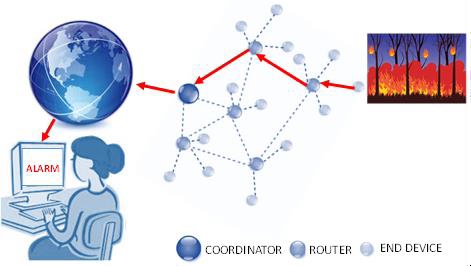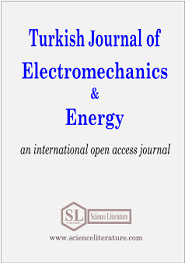
Contiki OS Usage in Wireless Sensor Networks (WSNs)
Abstract
Wireless Sensor Networks (WSNs) have very wide range of applications from health to agriculture, from military technologies to observing of volcano activities. Developers and engineers frequently need to simulate WSN to ensure developed applications work successfully and to analyze effects of various configurations of wireless nodes.Simulating the designed scenario and embedding the designed algorithms into the wireless modules effectively are the important factors for the developers and engineers in this field. In this study, Contiki Operating System is proposed as a convenient solution for developers and engineers. Contiki is an open source, Linux based operation system, and developed for Internet of Things (IoT) devices.In this paper, primarily, Contiki OS usage and advantages in WSN were explained, then Contiki OS usage over a sample scenario was given and finally advantages of Contiki OS over other popular operation systems such as Tiny OS and Lite OS were examined. Background information on WSN and Contiki OS to build an example scenario for beginners were provided.
Full Text:
PDFReferences
G.C.M. Meijer, Smart Sensor Systems, Wiley, Wiltshire, 55-57, (2008).
D. Puccinelli, M. Haenggi, Wireless sensor networks: applications and challenges of ubiquitous sensing, IEEE Circuits and Systems Magazine, 5(3), 19-31, (2005).
Y. Karan, N. As, Electromagnetic radiation measurement of a high gain wireless network adapter. Turkish Journal of Electromechanics and Energy, 1(2), 17-23, (2016).
A. Pal, Localization algorithms in wireless sensor networks: Current approaches and future challenges, Network Protocols and Algorithms, 2(1), 45-73, (2010).
G. Han, H. Xu, T.Q. Doung, J. Jiang, T. Hara, Localization algorithm for wireless sensor networks: A survey, Telecommunication System, 52(4), 2419-2436, (2013).
M. Ye, C. Li, G. Chen, J. Wu, EECS: An energy efficient clustering scheme in wireless sensor networks, In Performance, Computing, and Communications Conference, (IPCCC 2005) 24th IEEE International, Arizona, USA, 535-540, April (2005).
G. Hacioglu, V.F.A. Kand, E. Sesli, Multi objective clustering for wireless sensor networks, Expert Systems with Applications, 59, 86-100, (2016).
Contiki: The open source operating system for the internet of things, 2017, http://www.contiki-os.org/
K. Akkaya, M. Younis, A survey on routing protocols for wireless sensor networks. Ad hoc Networks, 3(3), 325-349, (2005).
IEEE Standards 802.15.4, (2017), http://www.iith.ac.in/~tbr/teaching/docs/802.15.4-2003.pdf
A. Dunkels, B. Gronvall, T. Voigt, Contiki-a lightweight and flexible operating system for tiny networked sensors, 29th Annual IEEE International Conference on Local Computer Networks, Florida, USA, 455-462, Nov. (2004).
Karadeniz Technical University, Engineering Faculty, Department of Computer Engineering, Computer Networks Laboratory, (2017), http://www.ktu.edu.tr/dosyalar/bilgisayarce12e.pdf
L. Philip et al., TinyOS: An operating system for sensor networks, Ambient Intelligence, Springer, 35, 115-148, (2005).
Q. Cao, T. Abdelzaher, J. Stankovic, T. He, The LiteOS operating system: Towards unix-like abstractions for wireless sensor networks, In Information Processing in Sensor Networks, IPSN'08. International Conference on IEEE, St. Louis, Missouri, USA, 233-244, April (2008).
Q. Cao, T. Abdelzaher, LiteOS: a lightweight operating system for C++ software development in sensor networks, In Proceedings of the 4th International Conference on Embedded Networked Sensor Systems, CO, USA, 261-262, Nov. (2006).
T.V. Chien, H. N. Chan, T. N. Huu, A comparative study on operating system for wireless sensor networks, ICACSIS Conference on IEEE, Jakarta, Indonesia, 73-78, December (2011).
URN: https://sloi.org/urn:sl:tjoee2284
Copyright (c) 2017 Turkish Journal of Electromechanics and Energy

This work is licensed under a Creative Commons Attribution-NonCommercial 4.0 International License.

 Indexed in:
Indexed in:
















